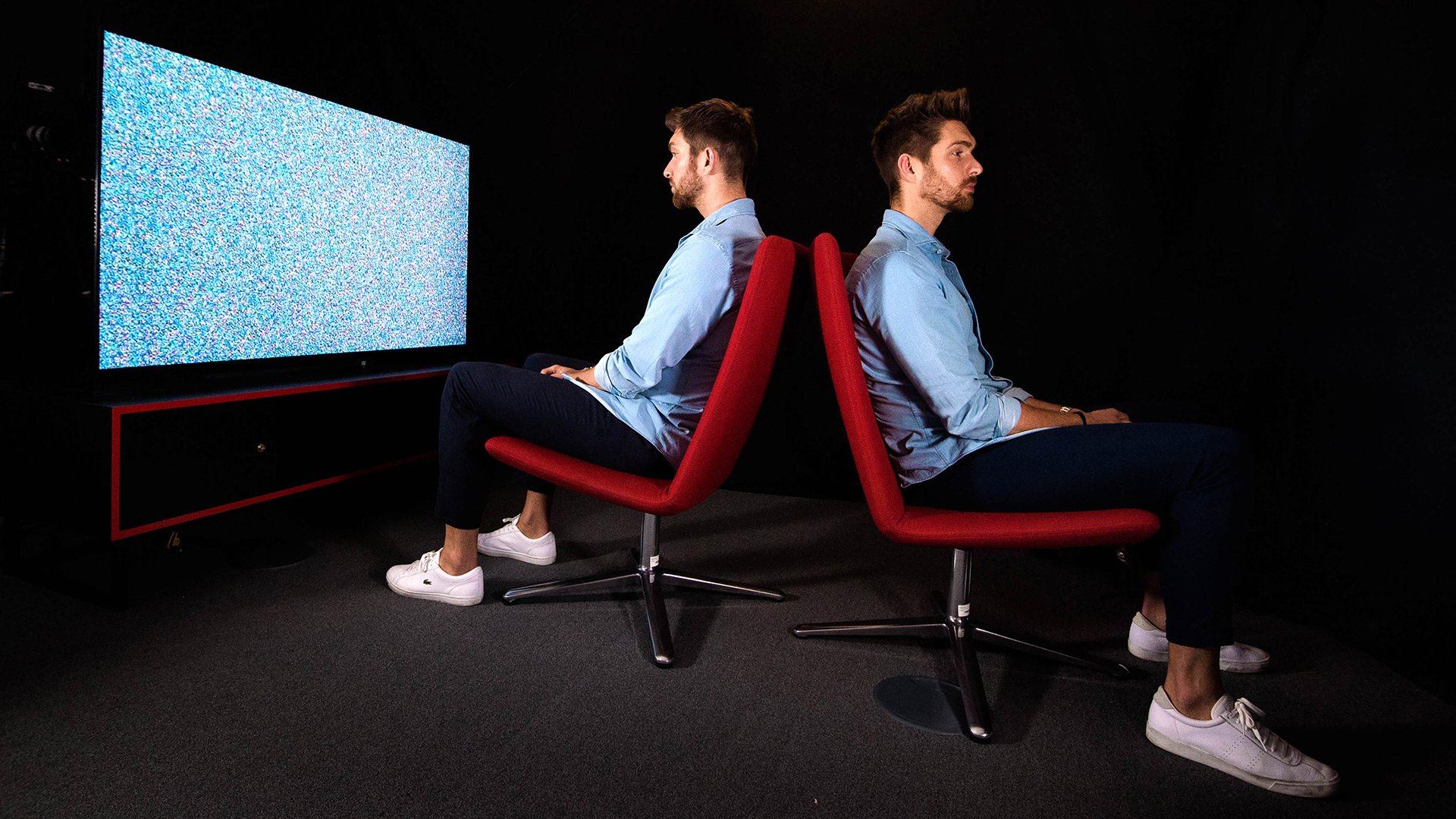
LG Partners with Realeyes on Experiment Using Identical Twins

Colin Pye
It’s not every day you get to take part in a fun experiment involving one of the most popular TV shows of all time and identical ‘twinfluencers’.
But that’s exactly what we did late last month at tech company LG’s headquarters. The tech giant wanted to compare the experience of watching programmes on its new 2019 OLED TV with it's older 2013 model.
They reached out to us to use our tech to measure the emotions and attention levels of identical twin social media influencers, Henry and William Wade, as they simultaneously watched the same highest-rated episode from hit TV show Game of Thrones - “The Battle of The Bastards” - in blacked-out TV immersion rooms.
William watched on the 2019 OLED TV, while Henry viewed the episode on a 2013 LED TV.

The Experiment
Using webcams mounted on top of the TVs, our AI platform analysed in real time their facial expressions, body language and head movements to see how they were feeling and whether they were paying attention or not throughout the episode.
Were they happy or sad? Scared or angry? Bored or excited? Our tech was there to pick up on every smile, grimace, yawn or glance away throughout the 144,000 frames.
That way we could find out exactly how they felt during every second, and ultimately who was more entertained. So what were the results?
Here’s the Science Bit
Realeyes’ AI-powered technology uses the latest in computer vision and machine learning to make machines emotionally intelligent.
What does that mean? Well, using opted-in webcams, our platform enables any laptop, mobile device or TV to recognise straight away how consumers are feeling and whether they are paying attention or not.
So we can let marketers know how engaging their content is, and what they need to do to make sure people are not switching off while watching.
If you’d like to know more, you can download Realeyes’ white papers on measuring emotion and attention.
Key Findings
1. William Was More Attentive (watching the OLED TV)
So the most important test of any piece of content is whether it gets people actually watching. For any TV show or ad campaign to work it needs to attract eyeballs on the screen otherwise you might as well pack up your cameras and go home.
Of course, tracking whether people are actually paying attention is difficult. Just because something is being broadcast on someone’s laptop or TV doesn’t mean they spent most of the duration of the content staring out of the window.
That’s where Realeyes’ attention tracking comes to the fore. Using webcams, we were able to track the twins’ head movements, facial expressions and body language to accurately measure whether their attention levels throughout the episode.
Our attention metric is the most sophisticated solution in the market. Unlike a lot of other solutions - which are limited by only looking at when viewers’ eyes are on the screen - our attention metric uses an incredibly rich set of behavioural cues, such as head position, yawning, scratching your face, closing your eyes etc, to help us identify whether people are actually paying attention.
So what did it find? Well, looking at the two twins’ attention levels, we could establish that William, watching on the 2019 OLED TV, was 25% more attentive than his twin. In other words, he was a little more glued to the TV than Henry.
2. William Had a More Positive Experience
OK, so Game of Thrones is hardly known for its positive role models and happy-go-lucky tone, but when comparing William and Henry’s emotions while watching it’s pretty clear who of the two came out of the experiment the happier.
Overall, William, watching on the 2019 OLED TV, displayed three times more positive emotions (such as happiness) than Henry, watching on the 2013 model.
As mentioned, this could be seen as a curious emotion to feel during an episode featuring a bloody battle and someone being eaten alive by dogs, but in the context of this experiment, you could instead view happiness as simply entertainment. In other words, William was 3x more entertained than Henry watching on the newer model.
The main reason why William’s happiness levels were higher was not because he spent most of the episode smiling and laughing, though. No, it’s because at key scenes his emotions were a lot more intense.
In fact, throughout the episode, 27 positive emotional peaks were observed on the newer TV compared to just four peaks on the older model. These peaks of happiness were also 15% more intense overall with the OLED TV.
3. William Was 3x Less Confused
Game of Thrones can be confusing, it’s not exactly a typical plot, and has a host of characters to remember. However, despite both identical twins having the same exposure to the show, and comparing their levels of confusion, one was clearly more confused than the other.
Henry, watching on the 2013 model, was three times more confused than his identical twin William, which could obviously have a serious impact on his enjoyment of the show.
Conclusion

Three times more positive, 25% more attentive and three times less confused - there’s no doubt which of the twins came away from the experiment the happier. William, watching on the 2019 OLED TV, showed visible signs throughout that he enjoyed the experience a lot more than his twin Henry, watching on a 2013 LED TV.
Whether that’s down to the 2019 model having better screen resolution, better audio and generally being more immersive, we can’t be 100% sure. We can only report what our AI platform measured.
After all, William and Henry may be identical twins, but they are not the same people. Maybe William smiles more than his twin brother generally and likes Game of Thrones more.
But one thing’s for sure, it was a really fun experiment and we wanted to say a massive thank you to LG for giving us the opportunity to showcase our tech.
